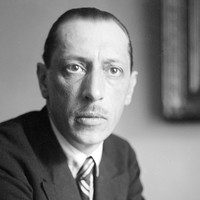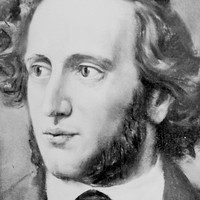Gil Shaham Plays Mendelssohn
Sponsored By
- March 5, 2016

Sponsored By


Haydn’s patron, Prince Nikolaus Esterhazy, was an avid musician and a true supporter of the arts, but he kept his Kapellmeister on a tight leash. Haydn initially had very little freedom to spread his music outside of the court, and he spent as many as ten months of each year sequestered at the prince’s isolated summer palace, producing dozens of opera performances and other entertainment. In 1779, Haydn finally negotiated a new contract that gave him more leeway to compose and publish independently, and soon his music was attracting followers throughout Europe.
One foreign admirer was a young French count, Claude-François-Marie Rigolet, who commissioned six symphonies that Haydn composed in 1785 and 1786. These “Paris” Symphonies earned Haydn the handsome sum of 25 louis d’or each, plus additional fees for publication. (By comparison, Mozart earned only 5 louis d’or for his “Paris” Symphony from 1778.) On the success of the six original works for Paris, the same patron asked Haydn for another set of three symphonies, which became Nos. 90-92, Haydn’s last symphonies before his twelve legendary works for London.
Haydn’s “Paris” symphonies capitalized on the large orchestra employed for the Concerts de la Loge Olympique, an ensemble that far outnumbered the private Esterhazy ensemble. It must have had quite an impact when the orchestra struck up the first performance of the Symphony No. 83 in 1787, conducted by its famous mixed-race maestro, Joseph Bologne, Chevalier de Saint-George. The symphony enters with the entire orchestra cranked up to a fortissimo dynamic, and the G-minor harmony is made all the more striking when the melody lands on a pungent C-sharp in the second measure. The secondary theme, by contrast, is full of humor and good cheer, with clucking grace notes and a honking oboe solo that earned this symphony its nickname, “The Hen.”
The Andante movement, built around a motive of a repeated note, is incredibly smooth and placid, except for a few surprisingly loud and jolting outbursts. The Menuet continues in high spirits; here the joke is a matter of displaced phrasing, with the main gesture of three descending notes entering on different beats. The Finale has its own bold strokes, including a passage in the development section that has the first violins coursing in constant motion while everyone else hammers out accented chords. Several incongruous pauses near the end show that Haydn’s wit is just as effective when applied gently.
Aaron Grad ©2015

Stravinsky’s one-act ballet Pulcinella, choreographed by Leonid Massine and designed by Picasso, premiered in Paris in 1920. The work was commissioned by Serge Diaghilev—the same impresario responsible for Stravinsky’s Firebird, Petroushka, and The Rite of Spring. It was also at Diaghilev’s behest that Stravinsky based the score on adaptations of music by (or mistakenly attributed to) Pergolesi. Stravinsky was initially reluctant, but came around to the idea after studying a stack of Pergolesi scores provided by Diaghilev.
It is a mark of Stravinsky’s singular genius that he was able to so commandingly appropriate Pergolesi’s (and other composers’) music, yet produce a score so fresh and so unmistakably his own. The ballet music, scored for three singers and chamber orchestra, moreover pointed towards a vital chapter of both Stravinsky’s career and Western music at large: Pulcinella marks the unofficial start of neoclassicism, an aesthetic prevalent among various early twentieth-century composers—Stravinsky the most influential among them—characterized by an interest in the musical principles of the Classical period. “Pulcinella was my discovery of the past,” Stravinsky said, “the epiphany through which the whole of my late work became possible. It was a backward look, of course—the first of many love affairs in that direction—but it was a look in the mirror, too.”
Stravinsky prepared the eight-movement Pulcinella Suite in 1922; the Suite utilizes the same instrumental forces as the ballet, but dispenses with the singers. (Nor would this be the last time Stravinsky revisited his ballet score: its material reappears in his Suite italienne for cello and piano, later arranged also for violin and piano.)
The Suite opens with perhaps the ballet’s best-known music: the regal Sinfonia, which is as notable for its sprightly orchestration as for its melodic distinctiveness. The dolorous Serenata follows, centered on a keening oboe solo in place of the tenor soloist in the original ballet score. This music proceeds immediately into the effervescent third movement, itself comprising three distinct parts: a Scherzino, Allegro, and Andantino, based on material from Pergolesi’s Trio Sonatas II and VIII. The breathless fourth movement is a tarantella, followed without pause by the light-on-its-feet Toccata. The music slows and the oboe moves to the fore once again, joined in due course by the rest of the winds, for the lyrical Gavotta con due variazioni. The bawdy Duetto and delectable Minuetto e Finale bring the Suite to a pleasing conclusion.
Patrick Castillo ©2015

Felix Mendelssohn was a teenager when he met Ferdinand David, a virtuoso violinist one year his junior. Later, when Mendelssohn became music director of the Leipzig Gewandhaus Orchestra, he invited David to join the orchestra as concertmaster. In 1838 Mendelssohn suggested to David, “I’d like to write a violin concerto for you next winter; one in E minor sticks in my head, the beginning of which will not leave me in peace.” The piece gestated for six years, until Mendelssohn fleshed it out in the summer of 1844. While writing the work, he corresponded frequently with David about violin technique, even asking for further advice after sending the score off to be published. David debuted the concerto in 1845, accompanied by the Leipzig Gewandhaus Orchestra. Mendelssohn died two years later following a series of strokes, leaving the Violin Concerto as his last completed orchestral work.
Mendelssohn’s Violin Concerto is full of innovations in form and texture, but perhaps its most radical quality comes from what it lacks: gratuitous showmanship. While the violin protagonist certainly encounters technical challenges and brilliant passages, every gesture is at the service of a shared musical discourse with the orchestra. Some of the most magical moments are those that defy conventional responsibilities, as when the violin launches immediately into the brooding first theme, or when it leaves that same melody to the orchestra after the cadenza, instead countering with ghostly arpeggios.
A single held bassoon note links the first movement to the second, blooming into a heartbreaking “song without words” crooned by the violin. As the slow movement recedes, a dramatic transition provides a link to the finale, with the home key recast as a sunny E major. The buoyant material affords ample opportunities for glitzy passagework, while a regal contrasting theme introduces a note of grandeur. It is fitting that this last major theme reworks the rhythms and intervals of the violin’s initial melody: What first appeared in the concerto as a lonely, searing question returns transformed into a knowing answer, expounded together in a mood of communal cheer.
Aaron Grad ©2014
Get driving directions and find nearby parking.
Find dining options close to the venue.
View seating charts to find out where you'll be seating.
SPCO concerts are made possible by audience contributions.
For exclusive discounts, behind-the-scenes info, and more:
Sign up for our email club!
